
views
Preparing the Male Child for Urine Testing

Prepare the boy. If your son is old enough to understand that you need to take a urine sample, it is possible he may be uncomfortable or resistant to providing a sample. Such resistance can cause stress to the child and the parent who is trying to collect the sample, so preparing the child ahead of time can help make the test go smoothly.

Reassure the child. Tell your son that the test will not hurt or cause him any physical discomfort, and reassure him that you will be there to guide him through the test.
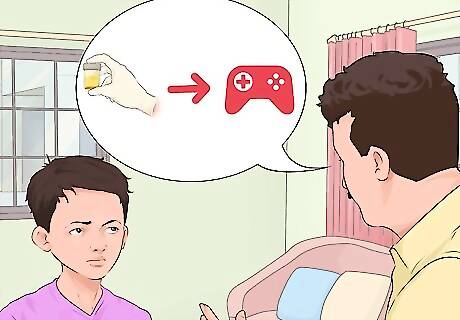
Make it a game. For boys, the urine test can be turned into a game, which will make your son more comfortable and perhaps even eager to complete the test correctly. Tell him to think of the test as target practice. Learning to urinate in the toilet is part of toilet training, so tell him that urinating into the test cup is the same thing. Come up with a fun reward for your son for when he "hits the target" during the urine collection. When the test is for protein in the urine, tell your son that the nurse or doctor will have to dip a special paper strip into the urine for a color test. Ask the doctor or nurse if your son can watch the strip being dipped and have your son guess what color the strip will turn.

Minimize stress. You can minimize stress for your son and for yourself if you do the following: Come prepared. Ask when you make your son's doctor's appointment whether a urine sample will be required. This way you can try to avoid having your child urinate right before the appointment. You should also ask if the urine sample must be a "clean catch" (a sterile specimen) so that you can practice having your son wipe with sterile towelettes before the appointment. Explain the test to your son. Telling your son that he will have to provide a urine sample prior to the doctor's appointment and then explaining the test to him in a reassuring, calm manner will also help prepare your son. Explain that even grown-ups collect a sample of urine this way when their doctors ask them to. Assure them this is a normal test and that it is not difficult. Give your son water prior to the test. Encouraging your son to drink plenty of water before your visit to the doctor's office can help him to urinate when it is time to collect the sample. Having an empty bladder and being unable to urinate may cause your son to feel pressured or stressed during the test, so make things easier for him by getting him to drink liquids beforehand. Simplify the test procedure. Ask the doctor's office which supplies they offer to make the collection as easy as possible. A receptacle placed in the toilet, such as a bedpan, can be simpler and more familiar for a child than catching urine in a cup. Follow your doctor's recommendations for how to simplify the test.
Getting a Clean Catch from a Toilet-Trained Male Child
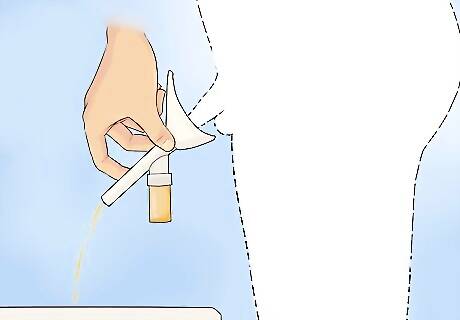
Do a clean catch. A clean catch is also known as a mid-stream urine sample. This works best for older, toilet-trained boys who can pass urine when asked to do so. However, such boys may still need help. A clean catch involves placing a cup under the urine stream to collect the urine.
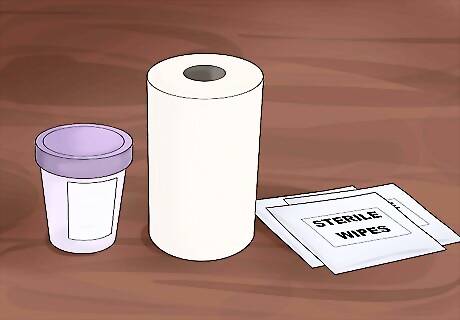
Prepare the test supplies. Lay out a couple paper towels to provide a clean area to set the specimen cup, three sterile wipes, and the urine specimen cup. You should be able to reach the supplies easily.
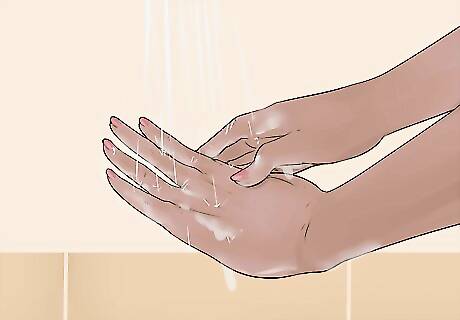
Wash up. Wash your hands thoroughly with soap and water, and have your son wash his hands with soap and water. It is important that you keep everything clean in order to avoid contaminating the urine sample. Avoid touching anything unnecessary, such as the wall, your face, etc. until after you collect the urine. Put on rubber gloves if they are available.
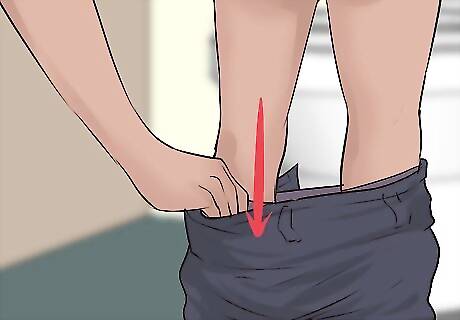
Help your son to pull down his pants and underwear. It is best to pull underwear and pants down to at least his mid-thighs to avoid getting urine on them.

Open the specimen container. Place the lid with the flat side (outside) facing down on the paper towel. Do not touch the inside of the lid or inside of the specimen container. It is best to keep your fingers away from the rim when handling the container.
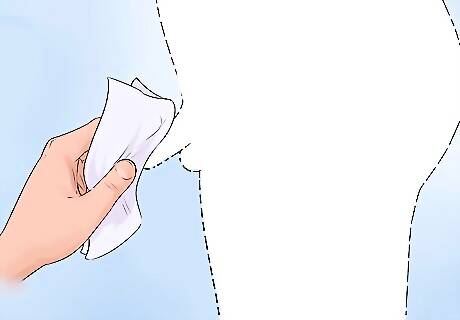
Clean your son's urinary area. You must clean your son's penis in order to prevent contamination of the urine sample. If your son is uncircumcised, gently retract the foreskin. Ask a nurse or doctor how to do so if you are unsure. Wipe the entire surface with the sterile/alcohol towelettes provided by the doctor's office. Using the sterile wipe, stroke around the urethral opening (end of the penis) toward his stomach. Discard the wipes. Replace the foreskin once the area dries. Gently pat the tip of the penis dry with a sterile cotton swab or gauze pad.
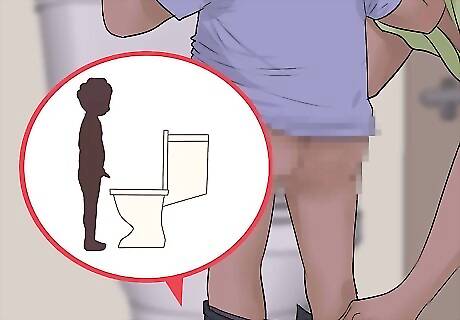
Have your son stand facing the toilet or urinal.He may assist by aiming at the toilet/urinal or, if he is uncircumcised, by gently holding back his foreskin (it should remain retracted until the sample has been collected).
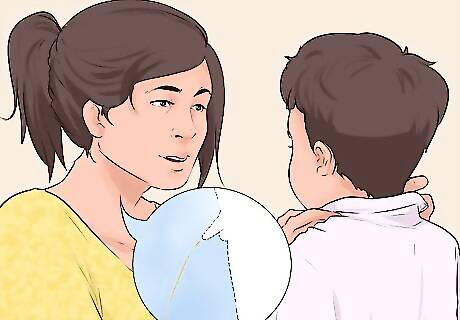
Ask him to pee. With the specimen cup ready, have him start urinating into the toilet. If he has difficulty, try turning on the water faucet.
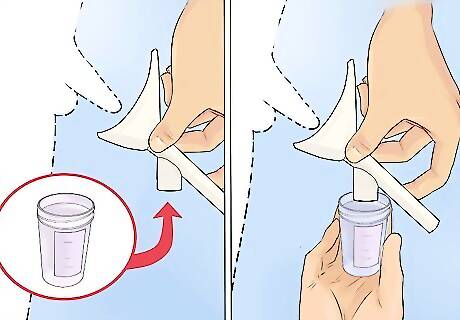
Collect the urine. After your son has urinated a small amount into the toilet, position the cup under the stream. He should continue to urinate. Hold the cup close enough so that the urine doesn’t splash, but not so close that his penis touches the cup. Moving the cup into his stream while he is peeing is a bit messy, and your fingers may get wet.

Remove the cup. Take the cup away when it's about 1/3 full. Do not allow the cup to overflow. Your son should finish urinating into the toilet/urinal after you have removed the cup. If the cup is even a 1/4 full and force of his stream lets up, remove the cup before he stops peeing.
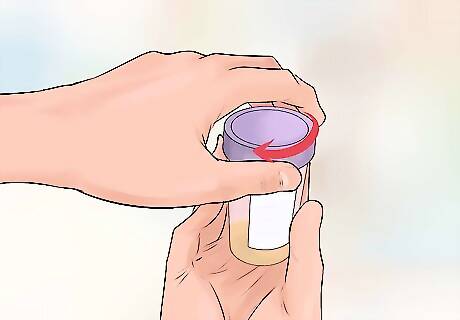
Close the specimen cup. Place the cover tightly on the specimen cup without touching the cup rim or inside of the lid. Once it is closed, you may wipe off any urine from the outside of the cup. Set the cup in a safe place to give to the doctor/nurse, or place it inside the special door for urine samples if there is one in the bathroom. If you are taking the sample at home, refrigerate the sample until you take it to the doctor's office.
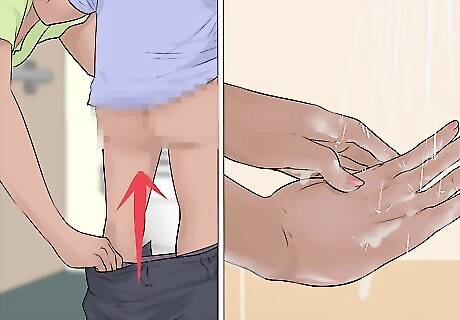
Help your son dress and wash his hands. If he is uncircumcised, gently pull the foreskin forward after he has finished urinating. Help him to pull up his underwear and pants, and have him wash his hands. Wash your hands, also.
Getting a Clean Catch from a Non-Toilet Trained Male Child
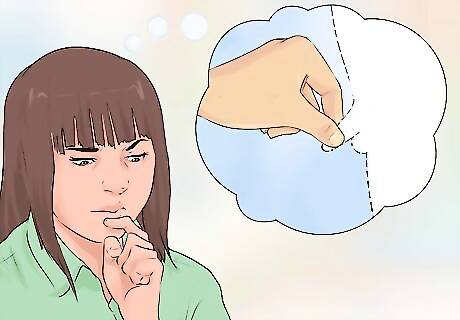
Learn about the "finger tap" method. For babies who are not yet potty trained, collecting a urine sample is a bit more involved than for a toilet trained child. You will need to coax your son to urinate and then collect the urine. Start this test one hour after your son has had plenty of liquid so that he has urine in his bladder.
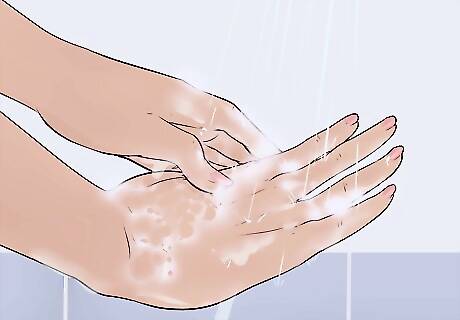
Wash your hands. Wash thoroughly with soap and water to prevent contaminating the urine sample.
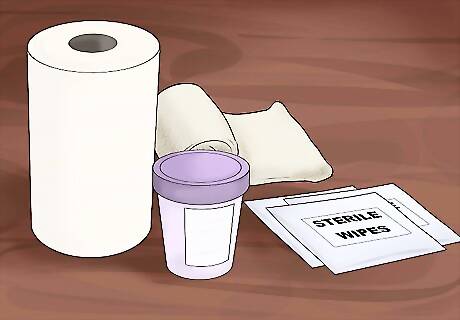
Prepare your work space. Set up your clean, sterile urine container, sterile wipes, sterile cotton swabs or gauze, and paper towels or baby wipes (in case of mess) prior to beginning the test. Make sure they are within reach and easily accessible during the test.

Place your son on his back. Place him on his back on the changing table.
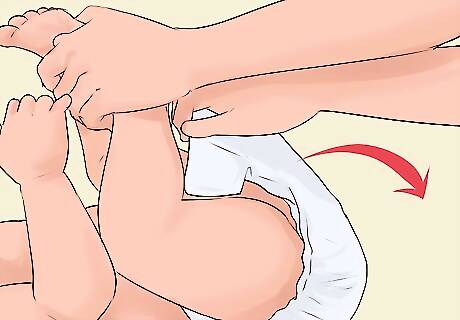
Remove the diaper. Do not worry if your son has already urinated in the diaper. He may have more urine in his bladder.
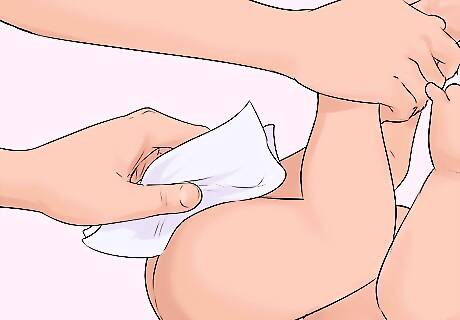
Clean your son's urinary area. You must clean your son's penis in order to prevent contamination of the urine sample. If your son is uncircumcised, gently retract the foreskin. Ask a nurse or doctor how to do so if you are unsure. Wipe the entire surface with the sterile/alcohol towelettes provided by the doctor's office. Using the sterile wipe, stroke around the urethral opening (end of the penis) toward his stomach. Discard the wipes. Replace the foreskin once the area dries. Gently pat the tip of the penis dry with a sterile cotton swab or gauze pad.
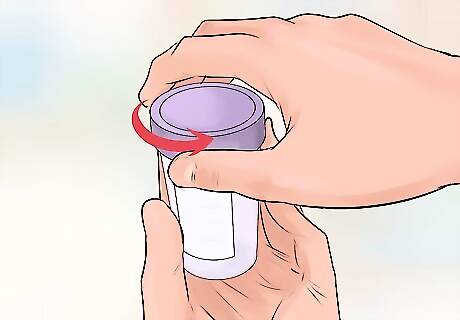
Remove the lid from the urine cup. Have the test cup ready. Do not allow anything other than the urine to touch the inside of the container or the lid, otherwise the urine test may be contaminated.
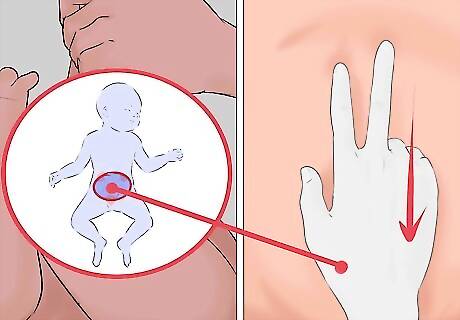
Tap your son above his bladder. Tap with two fingers on the center of his stomach toward the lower abdomen. This will encourage his bladder to empty. Ask if your doctor or nurse will show you where and how to tap before beginning the test. Alternate giving one tap every second for one minute, then stopping for one minute, until your son urinates or until 10 minutes have elapsed. Pay attention. The urine stream may happen very quickly, and you may miss it if you're not looking. Keep the urine cup in the hand that you're not using to tap with so that you can catch the urine as soon as it comes out. Be patient. The average time it takes to collect urine in this way is approximately 5.5 minutes. 77% of children will produce urine within 10 minutes. If your son does not urinate within 10 minutes, stop and try again after the next feeding.
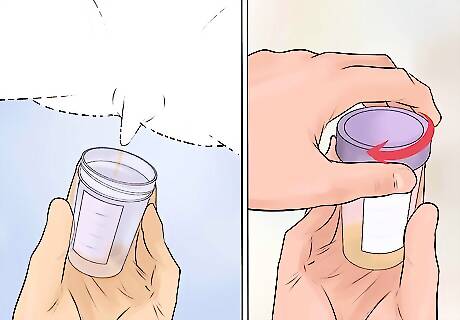
Catch the urine in the cup and put on the lid. Even if it is just a few drops, that may be enough for the test, so collect whatever you can.
Using a Urine Pad for a Non-Toilet Trained Male Child

Use a urine pad if you cannot do a clean catch. A "clean catch" is when you can get your son to urinate directly into a test cup. If that is not an option for your non-toilet trained son, you can also use a urine pad. Although using a urine pad has a higher risk of contaminating the urine sample, it is the next best option after a clean catch. Another option is a urine bag. Your doctor's office may provide you with one if they feel it may be helpful. This is placed inside the diaper, like the urine pad, to collect urine.
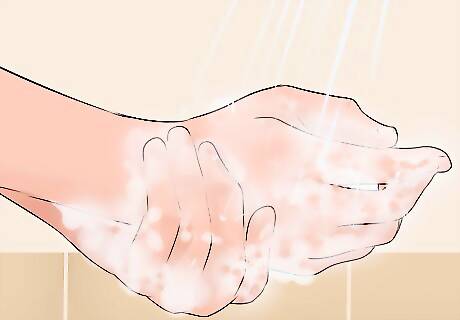
Wash your hands. Wash thoroughly with soap and water to prevent contaminating the urine sample.
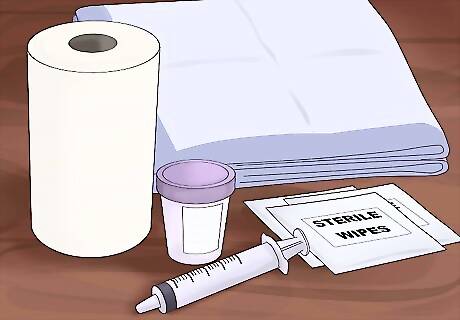
Prepare your work space. Set up your clean, sterile urine container, sterile wipes, sterile urine syringe (5 ml), urine pads, and any other supplies you might need prior to beginning the test. Make sure they are within reach and easily accessible during the test.
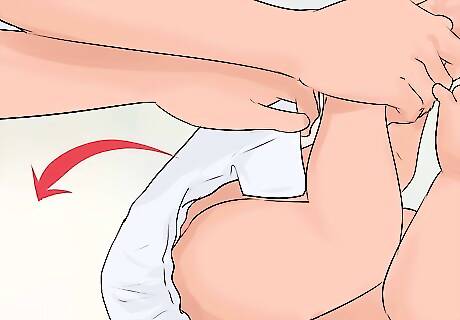
Remove your son's diaper. Place your son on the changing table, and remove his diaper so that you can clean him and prepare him for urine collection.
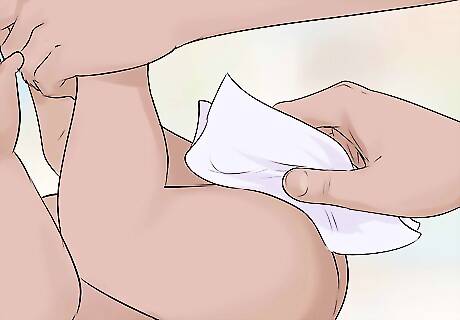
Clean your son's urinary area. You must clean your son's penis in order to prevent contamination of the urine sample. If your son is uncircumcised, gently retract the foreskin. Ask a nurse or doctor how to do so if you are unsure. Wipe the entire surface with the sterile/alcohol towelettes provided by the doctor's office. Using the sterile wipe, stroke around the urethral opening (end of the penis) toward his stomach. Discard the wipes. Replace the foreskin once the area dries. Gently pat the tip of the penis dry with a sterile cotton swab or gauze pad. Also wash the rest of your son's penis and bottom using soap and water or a sterile wipe.
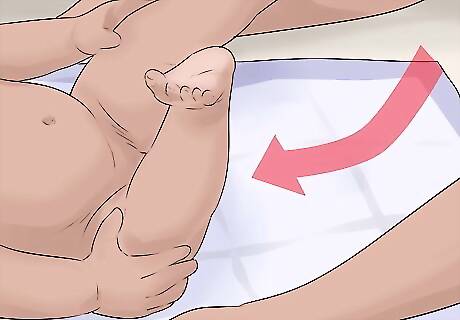
Position the urine pad. Turn a disposable diaper inside out and place it under your son with the outside (plastic) facing up. Place the urine pad on the outside of the diaper. Position it so that when you put the diaper on your son, the pad will cover his penis and bottom. Put the inside out diaper on your son with the urine pad inside.
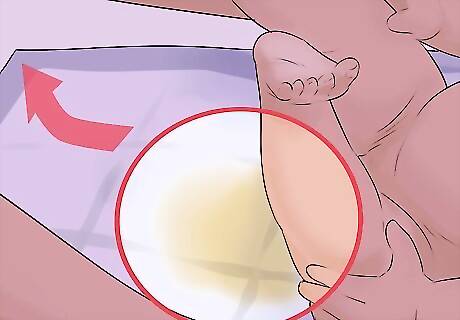
Check the pad and remove when wet. Check inside the diaper every 10 minutes until the pad is wet. Once your son has urinated, take off the diaper and pad. If your son has also defecated (moved his bowels), then discard the pad and start the test over again. You only want clean urine for the test. Place the pad on a flat surface with the wet side up.

Use the syringe to collect urine. Take your 5 ml syringe, and place its tip on the wet pad in the middle of the urine. If the urine is puddled on the pad, that is the best spot to place the syringe. Gently pull up the plunger. You will see urine slowly appear in the syringe as you suck the urine out of the pad.

Put the urine in the cup. Hold the syringe over the urine testing cup. Push down the plunger so that the urine squirts into the cup. If you need more urine, use the syringe to collect more from the pad. When you have enough urine in the cup, put the lid on the cup.

















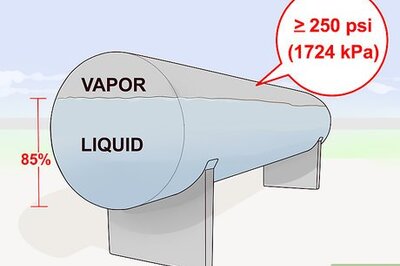


Comments
0 comment